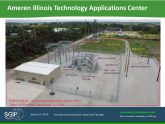In ‘Before The Flood,’ Elon Musk tells Leonardo DiCaprio that just 100 Gigafactories would be enough to move the entire world to sustainable energy. While critics scoffed, Tesla and SolarCity were busy building the prototype.
Just days after the Tesla-SolarCity merger was finalized, SolarCity announced a microgrid in T’au. The island in American Samoa now runs on nearly 100% solar energy with over 5,300 solar panels & 60 Tesla Powerpacks. According to SolarCity CEO Lindon Rive, “Ta’u is not a postcard from the future, it’s a snapshot of what is possible right now. Renewable power is an economical, practical solution for a growing number of locations and energy needs, and islands that have traditionally relied on fossil fuels can easily transition to microgrids powered by solar and storage today.”
Islands are an attractive and somewhat obvious market for renewable energy microgrids. First, islands are microgrids by default, having no grid connection to a larger grid. Like other remote areas, islands struggle with the high cost of transporting diesel fuel to run their conventional energy infrastructure. As seen on postcards, many islands have some of the best solar resources in the world.
The microgrid provides around-the-clock power to the 600 residents of Ta’u. The microgrids batteries charge during the day making the solar energy available at night.

The project was funded by the American Samoa Economic Development Authority, the Environmental Protection Agency, and the Department of Interior, and is expected to allow the island to save significantly on energy costs. The system is expected to offset the use of more than 109,500 gallons of diesel per year. Factoring in the escalating cost of fuel, along with transporting such mass quantities to the small island, the financial impact is substantial.
The Ta’u Microgrid is a substantial step towards Musk’s goal of simplifying the buying process of a microgrid. “Just because a product is big doesn’t mean the whole process needs to be complex. Bigness and complexity are not the same thing. Our utility customers have been quite pleasantly surprised by just how easy it is to implement. And it’s going to get a lot easier in the future.”
In a recent investor call, Musk insisted that utilities and large corporate customers appreciate fast, simple, and easy purchase options as much as regular consumers. “They don’t have to go through this big laborious process that’s a pain in the butt for them. It blows their mind when they can just click a button and then we install their [microgrid] and it works.”
This represents Musk’s affinity for productizing things. “I think it’s always good to productize things — you can click here and buy your microgrid versus having a tailored situation for all over the place. If you can productize it, it can happen so fast. I think that productizing a microgrid — just click here and get a microgrid and it just works — I think that’s a good way to go.”



